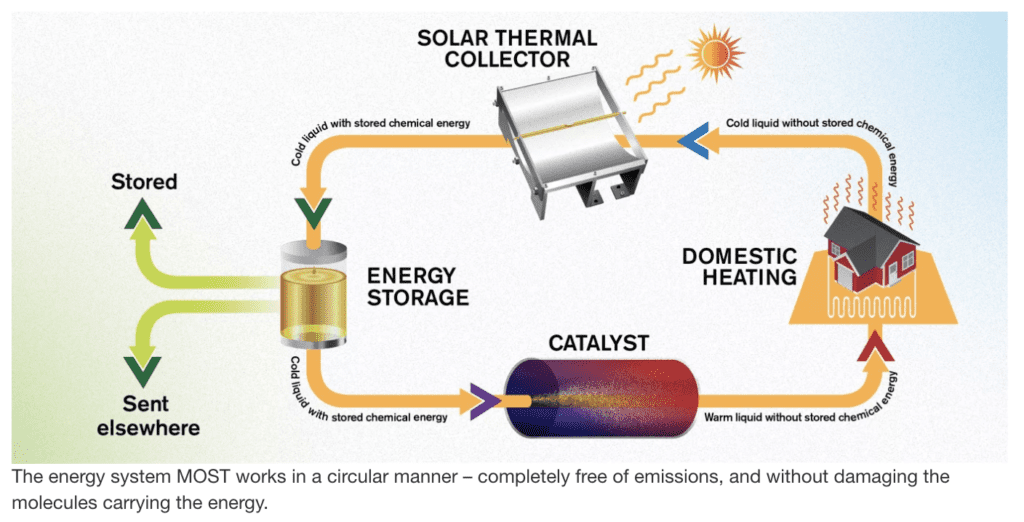Sweedish researchers have developed a new liquid that can store solar heat for almost two decades.
The main drawback of solar power is that we’re yet to develop reliable, dense, and long-term storage for the energy that it generates. Our only realistic option at this time are batteries, but they’re quite expensive, use on rare or polluting materials, and have a limited capacity. The current research, however, might provide exactly the breakthrough that the industry needs — the new compound, a specialized fluid called solar thermal fuel, can store and release solar heat for up to 18 years.
Chemical storage
“The energy in this isomer can now be stored for up to 18 years,” says one of the team, nanomaterials scientist Kasper Moth-Poulsen from Chalmers University.
“And when we come to extract the energy and use it, we get a warmth increase which is greater than we dared hope for.”
Solar fuels work similarly to a rechargeable battery that substitutes sunlight and heat in lieu of electricity. The team’s compound is a molecule (norbornadiene) in a liquid form that researchers at the Chalmers University of Technology, Sweden have been developing for over a year. It’s composed mainly of carbon, with some hydrogen and nitrogen atoms thrown in. So, up to now, it’s a pretty standard organic compound.
What makes this fluid stand out is its interaction with sunlight. When exposed to sunlight, the bonds between the molecule’s atoms get rearranged and stabilize in an energized form — an isomer (called quadricyclane). This transforms heat energy from the sun into chemical energy that can be stored and released. The isomer itself is stable enough to last unaltered for up to 18 years (which is a lot), even at room temperatures.
When the energy is needed, the ‘charged’ fluid can be drawn through a catalyst that unpacks the molecule to its original form. The excess chemical energy is given off as heat.
A prototype rig using this new fuel is already undergoing tests on one of the university’s buildings, the team adds. The system is based on a circuit that pumps the fluid through transparent tubes under a concave reflector (this focuses sunlight on the fuel). The charged fuel is then pumped into storage. The whole installation acts much like a sunflower, tracking the Sun as it moves across the sky.
When the energy is needed, the fluid is filtered through the catalyst, warming it by 63 degrees Celsius (113 degrees Fahrenheit). The team hopes that the heat can be used in various roles around the house — heating systems, dishwashers, anything and everything, really — before being pumped back to the roof once again.
“We have made many crucial advances recently, and today we have an emissions-free energy system which works all year around,” says Moth-Poulsen.
So far, the researchers have tested their fuel through 125 such cycles without observing any significant damage to the molecule. Furthermore, they report that one kilogram of the fuel can store 250 watt-hours of energy — which is double what a Tesla Powerwall can boast. However, they’re confident that there are still areas where the fuel can be improved. They hope to have the system generate at least 110 degrees Celsius (230 degrees Fahrenheit) more with further tweaks.
“There is a lot left to do. We have just got the system to work. Now we need to ensure everything is optimally designed,” says Moth-Poulsen.
Moth-Poulsen thinks the technology could be available for commercial use within 10 years.
The paper “Macroscopic heat release in a molecular solar thermal energy storage system” has been published in the journal Energy & Environmental Science.











